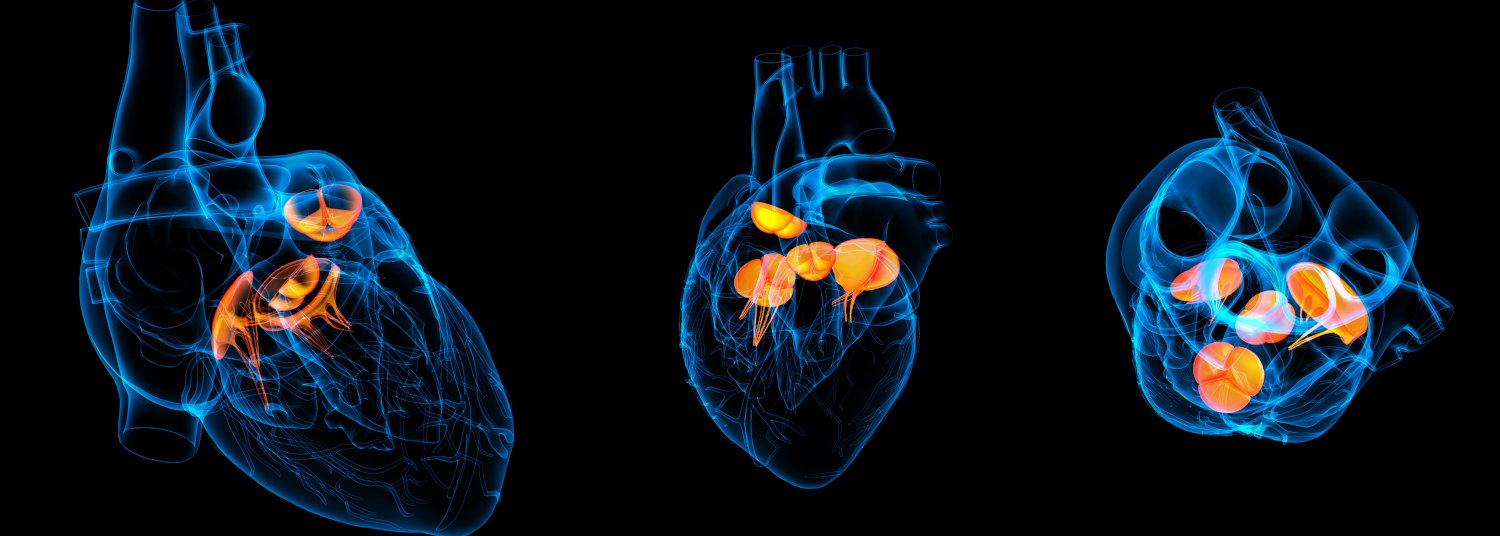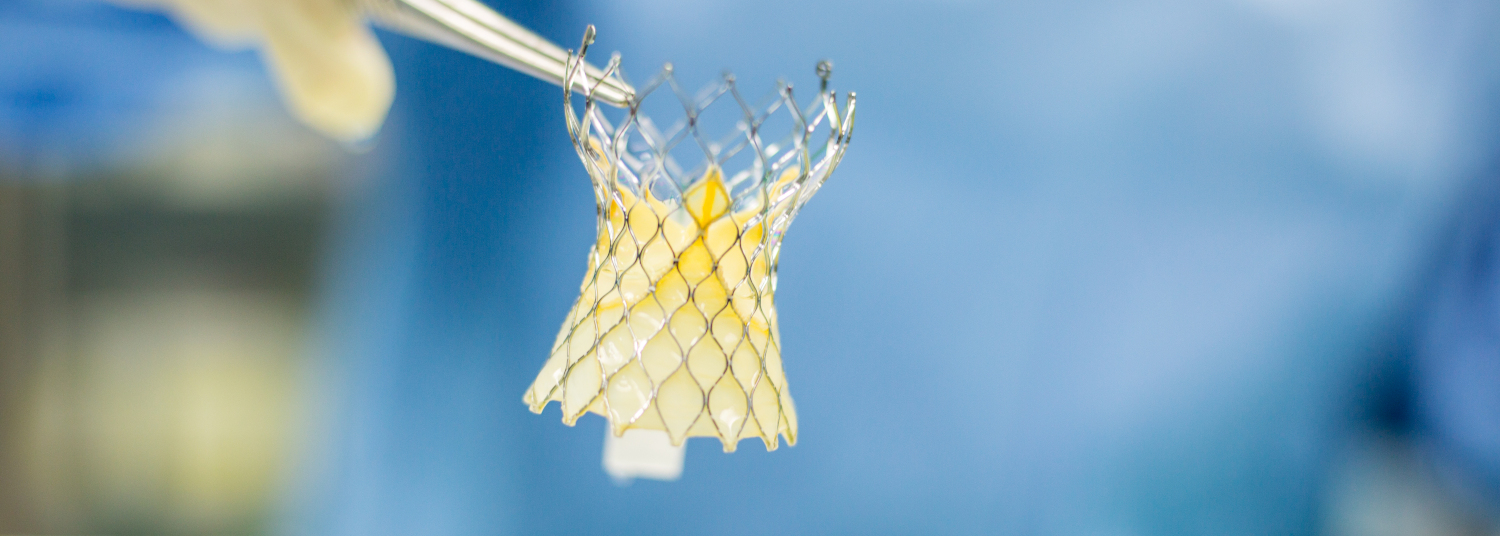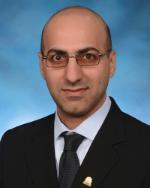Cardiac Surgery Research
Division Chief
Bradley Taylor, MD, MPH
- The University of Maryland, Cardiac Surgery Research Unit (CRU) is a fully integrated organization created specifically to facilitate the advancement of clinical research, discoveries, and innovations.
- The clinical trials management structure allows for accelerated startup and enrollment while maintaining good clinical practice and federal standards.
- The CRU has an on-call schedule, with crossed trained coordinators available to support enrollment and after-hours coverage, including holidays, nights, and weekends.
- In addition to being a recruited site by industry-leading sponsors, patients seek out our site for innovative cardiac surgery treatments.
- The CRU encompasses federal, industry, foundation, and PI-initiated trials involving drugs, devices, and biologics.
- The CRU manages a broad domain of surgical studies, including surgical coronary revascularization, mitral valve disease, aortic valve disease, thoracic aortic disease, pediatric cardiac disease, LVAD, ECMO, and heart and lung transplant.
Nariman Balenga, PhD
Nariman Balenga, PhD
Mechanisms of activation, signaling and trafficking of adhesion GPCRs GPR64 and GPR56
G protein-coupled receptors (GPCRs) transmit the extracellular stimuli into intracellular signals, by which they can orchestrate a myriad of cellular and physiological processes. GPCRs form the largest superfamily of surface receptors and their aberrant function causes diseases such as cancer, asthma, hypertension, endocrine and musculoskeletal dysfunction. Adhesion GPCRs (aGPCRs) are the second largest but the least studied family of GPCRs and have recently gained much interest due to their direct or indirect involvement in various diseases. In order to target aGPCRs therapeutically, we need to understand the mechanisms by which they are activated and the intracellular signaling cascades that they initiate. aGPCRs have an unusually long N-terminal fragment (NTF) that is cleaved during their biosynthesis but stays bound to the rest of the receptor non-covalently. The processes taking place after binding of extracellular ligands to this NTF can vary for different aGPCRs. While such interactions can stabilize a certain conformation and trigger or inhibit signaling in some aGPCRs, it can also dissociate the NTF and unmask a small tethered peptide (stalk) on the very N-terminus of the remaining receptor. We showed that the NTF of ADGRG2/GPR64, an orphan aGPCR, functions as an inhibitor and its deletion results in a receptor that is constitutively activated by its stalk. We provided compelling evidence that GPR64 regulates secretion of parathyroid hormone, a master regulator of bone metabolism by human-derived parathyroid adenoma cells. Via molecular and cellular assays, we have demonstrated that NTF-deficient GPR64 elevates cAMP levels by activating adenylyl cyclase, interacts with b-arrestins, becomes ubiquitinated and internalizes via unknown mechanisms. A mutant that lacks this tethered peptide and NTF (stalk-less) is devoid of constitutive activity but responds to the exogenously added synthetic tethered peptide and interacts with b- arrestins. The underlying mechanism for recruitment of b-arrestins by stalk-less GPR64 in the absence of G- protein signaling is not clear. These published and preliminary data combined with our current knowledge of another closely related aGPCR, ADGRG1/GPR56 lead us to hypothesize that specific structural elements control signaling, endocytic pathways and physiological functions of these aGPCRs. To shed light on the pharmacological and physiological characteristics of these receptors, we will: (1) Determine the impact of NTF and its cleavage on the binding of tethered peptides and trafficking of GPR64 and GPR56; (2) Identify the structural motifs and intracellular regulators that control G-protein and b-arrestin signaling downstream of GPR64 and GPR56 and (3) Determine the effects of GPR64 signaling and its NTF and stalk on bone development in Zebrafish, a low vertebrate model organism. These novel translational studies will greatly bolster our understanding of aGPCR pharmacology and lay the foundation for rational design of therapeutics for diseases caused by aGPCRs.
- Sponsor: NIH – National Institute of General Medical Sciences
Bartley Griffith, MD
Bartley Griffith, MD
Clinical Investigation of the Perceval S Aortic Heart Valve
Prospective, non-randomized, multi-center clinical trial to demonstrate the safety and effectiveness of the Perceval S heart valve when used to replace a diseased or dysfunctional aortic valve or aortic valve prosthesis. The Perceval S sutureless heart valve is designed for implant using conventional cardiac surgery techniques, but without the need for suturing the valve to the aortic annulus. The design of the Perceval S prosthesis offers an alternative to traditional stented and stentless biological valves using conventional open-heart surgery. As a result of the sutureless implant procedure used with the Perceval S sutureless heart valve, patients could benefit from: Reduced aortic cross-clamp times, with subsequent overall reduction of surgical timing and reduction in related risks; Elimination of sutures through the annulus and suture knotting, with consequent less risk of tearing the aortic annulus and wall, damaging the bundle of His, and reduction of embolizing foreign material released into the vascular system.
- Sponsor: Sorin Group USA, Inc.
Prospective Non-Randomized Single Arm Multi-Center Evaluation of the Durability of Aortic Bioprostheses/Valves with RESILIA Tissue in Subjects Under 65 (RESILIENCE Trial), #2018-06 (the "Trial")
Multicenter, prospective, non‐randomized, single‐arm, observational trial. The objective of this observational trial is to determine time to valve failure due to valve deterioration requiring re-intervention and collect/investigate early potential predictors of valve durability (e.g., calcification and hemodynamic deterioration) in RESILIA tissue valves.
- Sponsor: Edwards Lifesciences LLC
Donor Lung Tissue Collection Program
During surgical procedures for lung transplantation, lung biopsy, lung volume reduction surgery or similar surgical procedures, either part of or the whole lung is removed from a patient. Some of the lung tissue may be used for medical purposes (e.g. pathology samples), but this material is frequently discarded as medical waste. With appropriate consent of the patient or guardian, some or all of the unused lung tissue will be sent to United Therapeutics (UTC). UTC is only requesting lung tissue that is not needed for any medical purpose.
- Sponsor: United Therapeutics
Increasing Lung Transplant Availability Using Normothermic Ex Vivo Lung Perfusion (EVLP) at a Dedicated EVLP Facility EVP-DEV-LTX0-301
This is a prospective, multicenter, un-blinded, non-randomized study evaluating the safety and effectiveness of the Centralized Lung Evaluation System (CLES). The CLES is intended to increase use of deceased donor lungs for transplant by enabling organ evaluation by normothermic perfusion and ventilation in a controlled environment outside the body (ex vivo). The device is intended for use with potential donor lungs not otherwise used for transplant into male and female patients aged 18 years or older with end-stage lung disease awaiting first-time (double or single) lung transplant. The objective of this study is to evaluate the safety and effectiveness of the CLES in enabling evaluation of potential donor lungs not otherwise used for transplant into subjects with end stage, survival-limiting lung disease in need of lung transplantation. This will be accomplished by evaluating subject survival at the later of 6 months or hospital discharge post-transplant.
- Sponsor: Lung Bioengineering Inc. (Formerly Perfusix)
SALUS – The Direct Flow Medical Transcatheter Aortic Valve Replacement System a US Pivotal Trial
Prospective, multi-center, pivotal study enrolling 636 patients in an evaluable cohort (accounts for 10% loss to follow-up) at up to thirty (30) active investigational sites to determine the safety and effectiveness of the Direct Flow Medical transcatheter aortic valve system in patients who are extreme risk for surgery. The study is powered to compare the rate of 12 month death and disabling stroke to a combined and weighted OPG in (2) prior published studies. The Direct Flow Medical Transcatheter Aortic Valve System is a non-metallic transcatheter heart valve system comprised of three components: a bovine pericardial tissue leaflet heart valve; a delivery system; and an exchange system. The bioprosthesis is available in four sizes: 23mm, 25mm, 27mm and 29mm. The 23mm valve will be available for use in the trial once approved by FDA. The Direct Flow Medical Transcatheter Aortic Valve System is indicated for symptomatic patients with severe aortic valve stenosis who require replacement of their native aortic valve, who have a predictive operative mortality or serious irreversible morbidity risk.
- Sponsor: Direct Flow Medical
Development and Pre-Clinical Trial Qualification of a Pediatric Pump-Lung System for Children
The need for reliable and effective cardiopulmonary support devices for young children with lung or heart failure is well established. For those pediatric patients who become refractory to conventional therapies, aggressive mechanical circulatory intervention through extracorporeal membrane oxygenation (ECMO) or ventricular assist devices (VADs), may improve the likelihood of survival. ECMO systems are attractive since they closely simulate physiological gas exchange and circulatory support; but in practice, these systems are limited by their operational complexity, mechanical failure, clots in circuit, and bleeding complications. Systems for pediatric ECMO have not changed substantially in the last decade. Improved outcomes in support of children with either heart or lung failure have been principally due to better selection and management of the patients. A newly designed ECMO system is required for continued reduction in the morbidity and mortality. We propose to contribute a new generation ECMO system based on advanced bioengineering principles focused on an optimized blood flow path and pediatric ICU-enhanced patient mobility with biochemical coatings to reduce platelet adherence. We in partnership with industry partners have developed a series of miniature, integrated pump-oxygenators for both young children and adults. These devices combine uniquely configured hollow fiber membranes with novel blood pump technology, resulting in ultra-compact systems with a low priming volume and improved biocompatibility. The pediatric model, called Pedi Pump-Lung (PediPL), is specifically designed for use for up to 30 days in patients weighing 5-25 kg who 1) are not sufficiently stable to be weaned from cardiopulmonary bypass after surgery; 2) have severe primary respiratory failure or secondary failure associated with cardiac disease; and 3) experience profound cardiogenic shock and require urgent support. The objectives of this project are to refine and complete development of the PediPL and associated accessories into an ECMO support system permitting ambulatory respiratory and cardiopulmonary support and to conduct pre-clinical evaluation of readiness for manufacturing of the clinical grade PediPL and pre-clinical testing in compliance with Good Manufacturing Practices (GMP) and Good Laboratory Practices (GLP) in anticipation of anticipation of 510 K clearance and an Investigational Device Exemption (IDE) approval from FDA.
- Sponsor: NIH-National Heart, Lung, and Blood Institute
A Phase III, Multicenter, Open-Label, Extension Clinical Trial to Demonstrate the Effectiveness and Safety of Liposomal Cyclosporine A (L-CsA) Inhalation Solution Delivered via the PARI Investigational eFlow® Device plus Standard of Care in the Treatment of Bronchiolitis Obliterans Syndrome in Patients post Single or Double Lung Transplantation
This is a Phase III, multicenter, open-label, extension clinical trial of Liposomal Cyclosporine A (L-CsA) Inhalation Solution for the treatment of Bronchiolitis Obliterans Syndrome (BOS). Enrollment will be limited to patients who have completed 48 weeks participation in either the BT–L-CsA–301–SLT (BOSTON-1) or BT–L-CsA–302–DLT (BOSTON-2) trial. All patients in this clinical trial will receive L-CsA in addition to SoC, regardless of randomization arm in prior trials. The objective of the trial is to assess the long-term effectiveness and safety of L-CsA plus Standard of Care (SoC) in the treatment of BOS in single (SLT) and double lung transplant (DLT) recipients.
- Sponsor: Breath Therapeutics
Medtronic low risk TAVR Transcatheter Aortic Valve Replacement with the Medtronic Transcatheter Aortic Valve Replacement System in Patients at Low Risk for Surgical Aortic Valve
Multi-center, international, prospective, randomized, interventional, pre-market trial to evaluate the safety and effectiveness of the Medtronic Transcatheter Aortic Valve Replacement (TAVR) System in patients with severe aortic stenosis at low risk for Surgical Aortic Valve Replacement (SAVR).
- Sponsor: Medtronic Inc.
Enhancement of an Artificial Lung for Ambulatory Respiratory Support
Acute and chronic end-stage lung diseases (ESLD) are increasing healthcare problems. Currently, when mechanical ventilation fails only extracorporeal membrane oxygenation (ECMO) with components designed and qualified for a few hours is available. Current ECMO systems are often associated with serious complications and generally are restricted to bedside use. A wearable, biocompatible integrated pump-lung would offer significant advantages to patients over existing options. Such a device would pose a prolonged ambulatory platform for natural lung healing from acute injury, a bridge to transplant or destination therapy, or for novel lung regenerative therapies. With support from the NHLBI, we have made remarkable progress in development of a wearable artificial pump-lung system (APLS) for ambulatory respiratory support. The goal of this renewal application is to develop a new class of gas exchange device with adaptive physiologic control for a wearable artificial lung system. We propose to develop unique strategies to reduce the sizes of gas exchanger devices and associated drive consoles and to provide adaptive respiratory support to ambulating ECMO patients. Three specific aims of the proposal are: (1) to develop a small-sized and multifunctional membrane respiratory assist device (MRAD) for ECMO therapy in the ambulatory setting. The novel MRAD will include a dual chamber gas exchanger (DCGE) for blood and gas flows with an integrated centrifugal pump; (2) to develop a lightweight console for the MRAD with auto-adaptive control based on the gas exchange demand of an ambulating patient. The portable console will be less than 20 lbs and can be placed into a backpack; and (3) to conduct in-vitro regulatory qualification tests and chronic (30-day) in-vivo animal experiments to assess the long-term function, biocompatibility, and durability of the MRAD and its biologic effect on the animal. The efficiency of the new gas exchange device will reduce its size and its console by near 30%. The reduced console size and weight will reduce its burden to the user and will permit its configuration into a backpack design as well as a small roller case. Completion of aims will redefine the technology appropriate for broadened use of ambulatory ECMO and for its out-of-hospital use.
- Sponsor: NIH-National Heart, Lung, and Blood Institute
Shear-induced Hemostatic Dysfunction and Bleeding in CF-VAD Patients
Project Summary/Abstract: Heart failure (HF) affects 5.1 million adult patients in the US. About 50% of people diagnosed with HF will die within 5 years. Ventricular assist device (VAD) therapy has evolved into a standard therapy for patients with advanced HF, not only as a bridge to myocardial recovery or cardiac transplantation but also as a destination therapy. The recent data suggest that approximately 85 and 75% of patients supported with continuous flow VADs (CF-VADs) will survive at 12 and 24 months, respectively. These survival rates are approaching those of heart transplant patients. However, bleeding has become a significant problem for the CF-VAD therapy. Thus it is critical to understand the bleeding risk of CF-VAD support and their underlying mechanistic origins. Given the potential of the CF-VAD therapy for end-stage HF patients and the need to reduce significant device associated complications, we propose to conduct a series of clinical, biological and bioengineering experiments to seek a better understanding of shear-induced hemostatic dysfunction (SIHD) and bleeding in HF patients supported with CF-VADs and their link to blood flow dynamics of CF-VADs and pre-existing hemostatic disorder of HF patients. Further we seek to uncover the underlying molecular mechanisms of SIHD for better medical management and to create a database of SIHD for VAD design refinements. Three specific aims of the proposed project are: (1) To determine temporal changes of biomarkers of SIHD in HF patients prior to and during CF-VAD support and to link these changes to post-implant bleeding events; (2) To model shear stress indices (SSI) of CF-VADs and link them to measured biomarkers of SIHD and Bleeding in CF- VAD patients with consideration of pre-existing hemostatic disorder and patient-specific SIHD sensitivity to SSI prior to receiving a CF-VAD; and (3) To elucidate underlying molecular mechanisms of SIHD associated with CF-VADs and to establish a database of biomarkers of SIHD for VAD design improvement. Altogether, a combination of clinical hematology, biological as well as bioengineering approaches will be used to derive the basic knowledge behind bleeding complications and to investigate the influence of device-specific non- physiological fluid dynamic characteristics like shear stress and exposure time on SIHD. The successful completion of this project will create a new knowledge of bleeding associated with CF-VADs. The new knowledge can be used by clinicians to refine bleeding risk stratification in patients for the improved quality of life and by engineers to develop less traumatic, next generation biocompatible VADs.
- Sponsor: National Institutes of Health
Evaluation of the Edwards Pericardial Aortic Biorosthesis Model 11000A (COMMENCE TRIAL)
- Sponsor: Edwards Lifesciences LLC
Cardiac Xenotransplant Development and Regulatory Approval Project
- Sponsor: Lung Biotechnology PBC
Deqiang Li, PhD
Deqiang Li, PhD
Cardiac regeneration by histone deacetylases
Heart disease and heart failure remain the leading causes of morbidity and mortality worldwide. Adult mammalian heart demonstrates limited regenerative potential. Numerous measures, such as stimulating preexisting cardiomyocyte proliferation by activating cell cycle, have been attempted previously to induce heart regeneration, although only modest effects have been achieved to date. Adult cardiomyocytes need to undergo dedifferentiation first before proliferation, if not simultaneously. In fact, adult zebrafish heart regeneration is accomplished through both dedifferentiation and proliferation. Chromatin state and remodeling is often associated with numerous physiological or pathological processes including organ development, aging, and cancer. However, it is unclear whether epigenetics dictates cardiomyocyte proliferation capacity, or, whether harnessing epigenetics in adult cardiomyocytes stimulates proliferation. Through a comparative transcriptomic analysis of murine embryonic day (E) 14.5 hearts (proliferation active) and adult hearts (proliferation inert), we identified a number of chromatin remodeling factors including histone deacetylase 7 (HDAC7) that are enriched in E14.5 hearts but missing in adult hearts. HDAC7 belongs to Class II HDACs, which have specific tissue distributions and shuttle between the nucleus and cytoplasm in response to signals. Studies have shown that knockout of HDAC7 compromises vascular integrity during heart development, while overexpression of HDAC7 induces tumor growth and epithelial proliferation. However, the potential role of HDAC7 in cardiomyocyte proliferation is undetermined. In our preliminary studies, upon knocking down of HDAC7 in cultured neonatal mouse cardiomyocytes (NMCMs), we found that cardiomyocyte proliferation was significantly decreased. By contrast, overexpression of HDAC7 in NMCMs resulted in significant cardiomyocyte dedifferentiation and increased proliferation. Further, overexpression of HDAC7 in adult cardiomyocytes in vivo significantly induced cardiomyocyte proliferation and improved cardiac function after myocardial infarction. Based on these novel and exciting preliminary findings, we hypothesize that HDAC7 is both necessary for cardiomyocyte proliferation and sufficient to reactivate postnatal cardiomyocyte proliferative and regenerative potentials. Three aims are proposed to test our central hypothesis. Aim 1: To determine the mechanisms by which HDAC7 promotes cardiomyocyte proliferation; Aim 2: To determine whether HDAC7 is required for cardiomyocyte proliferation; Aim 3: To test whether HDAC7 overexpression promotes adult cardiomyocyte proliferation and improves heart function after myocardial injuries. We intend to achieve these goals by using a synergistic approach of mouse genetics, developmental and molecular biology, and biochemistry. Results of these experiments will establish a novel and rigorous therapeutic strategy for promoting heart regeneration and pave a new path to effective heart repair in humans.
- Sponsor: NIH – National Heart, Lung, and Blood Institute
Muhammad Mohiuddin, MBBS
Muhammad Mohiuddin, MBBS
Genetically-engineered pig organ transplantation in baboons: immunological and functional studies
During the past 5 years, considerable progress was made in the results of heterotopic heart transplant (HHTx) (and, to a lesser extent, orthotopic heart transplant (OHTx) with genetically-engineered (GE) pig heart Tx in nonhuman primates (NHPs). After HHTx (in the abdomen), (recently carried out exclusively by our group), recipient survival has been measured in years (McGregor et al., 2008;Mohiuddin et al., 2016;Mohiuddin et al., 2019). The barrier of the innate immune response has largely been overcome by the availability of increasingly sophisticated GE pigs, and the adaptive immune response has been successfully prevented by the novel immunosuppressive (IS) regimen introduced by our group(Mohiuddin et al., 2012;Mohiuddin et al., 2014a;Mohiuddin et al., 2014b;Mohiuddin et al., 2014c;Mohiuddin et al., 2016). Progress after OHTx (life-supporting) of GE pig heart has been more limited due to “peri-operative cardiac xenograft dysfunction (PCXD)” leads to “post-transplant heart failure (PTxHF).” However, a breakthrough was made by the Munich group in 2018, who reported xenograft survival (XenoGS) for 6m(Langin et al., 2018) after OHTx. IS used by Langin and his colleagues was almost entirely based on our own studies, but PTxHF of xenograft was at least partially resolved by a novel preservation approach (the Steen, non-ischemic preservation system)(Steen et al., 2016). However, the perfusate in this non-static cold preservation system (NSCPS) contains many principle components, of which most have unknown significance(Qin et al., 2016;Langin et al., 2018).We will now utilize the critical knowledge gained recently in our own laboratory to ensure consistent 6m or more survival of baboons after the OHTx of hearts from 8GE pigs. In addition, we shall carry out a detailed study of cardiac function in the absence of both innate and adaptive immune response, which is afforded to us in our unique 8GE OHTx models.
- Sponsor: University of Alabama at Birmingham
Bradley Taylor, MD, MPH

Bradley Taylor, MD, MPH
A multi-center, randomized, within-subject-controlled, open label study of the safety and effectiveness of VEST, Venous External Support
The purpose of this study is to demonstrate the safety and effectiveness of the VEST for its intended use: limiting intimal hyperplasia by providing permanent support to saphenous vein grafts which are being used as conduits in patients who undergo coronary artery bypass grafting (CABG) procedures as treatment for coronary arteriosclerotic disease. This protocol describes a prospective, multi-center, randomized, within-subject-controlled, open label clinical trial to evaluate the safety and effectiveness of the VEST, an external mechanical support for autologous saphenous vein grafts that are created during Coronary Artery Bypass Surgery (CABG). This study is designed to provide safety and effectiveness data with co-primary endpoints measured over 12 month follow up post index CABG procedure. Patients will continue to be followed annually up to 5 years in the post-approval period.
- Sponsor: Vascular Graft Solutions
A Prospective, Multicenter, Non-Blinded, Non-Randomized Early Feasibility Study of the RelayBranch Thoracic Stent-Graft System in Subjects with Thoracic Aortic Pathologies Requiring Treatment Proximal to the Origin of the Innominate Artery
The purpose of this study is to conduct an early clinical evaluation of the RelayBranch System, which will provide initial insight into the clinical safety and function of the device. This Early Feasibility Study (EFS) will assess the safety and effectiveness of the device at the index procedure and at 30-day follow-up. The study will evaluate the delivery and deployment of the device, patency of branches and branch vessels, and exclusion of the aortic pathology. The data will help determine if modifications need to be made to the device, the procedural steps, operator technique, or the indications for use.
- Sponsor: Bolton Medical Inc.
Randomized Trial of Hybrid Coronary Revascularization Versus Percutaneous Coronary Intervention
- Sponsor: Icahn School of Medicine at Mount Sinai – NIH
Evaluation of the GORE TAG Thoracic Branch Endoprosthesis (TBE Devise) in the treatment of lesions of Aortic Arch and Descending Thoracic Aorta
- Sponsor: W.L. Gore & Associates, Inc.
Zhongjun Jon Wu, PhD
Zhongjun Jon Wu, PhD
Multiscale Predictive Modeling of Blood Cell Damage with Experimental Verification
To develop a Multiscale model to characterize Blood Cell Damage under complex flow conditions. Blood Damage is an important concern for various Blood wetting medical devices. In literature, Blood Damage criterion is typically obtained through empirical fitting of experimental hemolysis data in a specific device, yet little is known about cellular scale process of blood Cell Damage which hinders the accurate evaluation of Blood Damage in a general medical device. The goal of this proposal is to study Blood Cell Damage at molecular and cellular level using combined computational Modeling and Experimental approaches. Specifically, we will develop a Multiscale model that links molecular scale pores formation to Cell membrane damage and hemoglobin release. The Multiscale computational Modeling will be applied for the first time to study of cellular flow over various channel geometries and clinically relevant devices with consideration of both hydrodynamics and membrane Damage dynamics. Specifically, we plan to: 1. Develop a Multiscale red Blood Cell membrane Damage model. A localized coarse-grained molecular dynamics model at the high stress region will be concurrently linked with a network based Cellular Membrane model. 2. Couple the Cell membrane Damage model with local fluid flow through Immersed Boundary method to study Cell deformation, pore formation and membrane rupture. Such computational model will be applied to predict Blood Cell damages in a channels with different geometries and flow conditions. A generalized cellular level Blood Cell Damage model will be developed. 3. Verify the developed Multiscale Blood Cell Damage model using AFM measurements, microfluidic tests, and Couette-type blood-shearing devices. A few designed tests will be performed to evaluate Cell Damage based on hemoglobin analysis of individual Cells under controlled stress History and compared to the simulation results. Finally, the developed blood Damage model will be applied to study hemolysis in a ventricular assist device. The proposed multi-scale model can directly correlate the microscale state of the Cell membrane to local stresses as well as predict Cell Damage in device with complex geometry and flow condition. Such model could serve as a Predictive tool for hematologic biomedical device design and optimization.
- Sponsor: Lehigh University – NIH
Development of a Paracorporeal Pump-Integrated Artificial Lung for Transport of Warfighters with Acute Respiratory Distress Syndrome (ARDS)
- Sponsor: University of Kentucky – US Department of Defense
Kai Y. Xu, PhD
Kai Y. Xu, PhD
Testing a novel immunotherapy to prevent type-1 diabetes-induced kidney failure in a rat model
- Sponsor: Diabetes Action Research & Education Foundation










